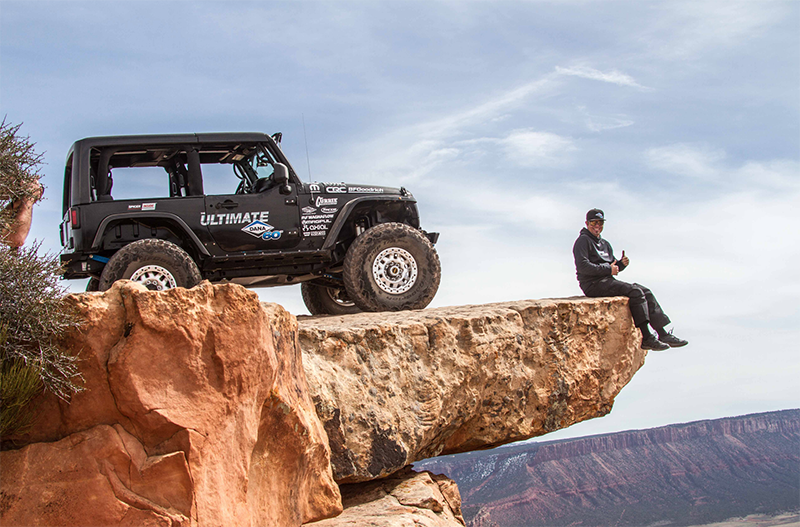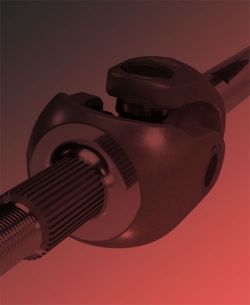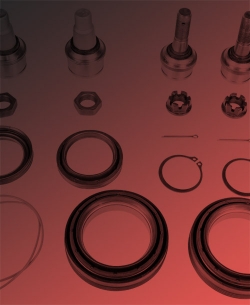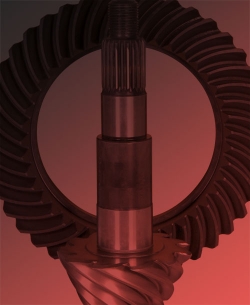Bigger Tires Demand Related Modifications
Rolling into your driveway with a brand new or new-to-you Jeep® is an unforgettable feeling. At that moment, many new off-road vehicle owners are equally excited about the idea of hitting the trails, and of which modifications or upgrades to move ahead with first. Whether owners are aiming for better off-road performance or just want to achieve a certain “look,” it’s important to remember that many vehicle upgrades require other corresponding changes.
To explore this topic further, we sat down with Senior Manager of Dana Performance Randall Speir, who is both an off-road enthusiast and a Dana and Spicer® parts product expert.

Q: Randall, we know that you’re a huge supporter of people upgrading their rigs to fit their lifestyles. What is essential for vehicle owners to keep in mind when making modifications?
A: When you start modifying your vehicle, you go outside the original design parameters. So, you’re going to fatigue, or wear out, certain parts quicker if you don’t make other related upgrades. Any modifications should be well-considered and researched to be sure that you upgrade all the related components that you need to.
Q: It sounds important to recognize that some vehicle upgrades go hand-in-hand with others. Can you give us an example?
A: Many owners of popular off-roading vehicles like Jeeps can’t wait to upgrade their vehicle to larger tires. But bigger tires put more stress on the drivetrain and change how your vehicle operates. The larger tires create more torque and bending forces, which can increase part fatigue, raising the potential for early part failure. When you’re ready to upgrade to bigger tires, you’ll also need upgraded u-joints and axle shafts for optimum performance.
Q: Are there other issues beyond part fatigue to consider when you upgrade to bigger tires?
A: Absolutely. A gear ratio change is essential to achieving a good balance between the torque you want, and the efficiency of your engine and transmission. The larger tire size changes the optimization of the transmission-to-engine operation. You need to change the axle’s gear ratio, or you’ll get terrible gas mileage and wear out the transmission quicker.
Q: It sounds like a gear ratio change is actually essential when upgrading your tire size.
A: Yes, it is for any vehicle, and I’ll give you an example related to Jeeps. The Jeep Wrangler JL and the Gladiator JT now come with an 8-speed automatic transmission. But if you don’t put in the correct gear ratio for the tire size, you lose the ability to utilize the 6th, 7th, or 8th gear speeds. This is what kills the gas mileage – but a gear swap will solve that issue. And of course, if a vehicle owner is doing a gear swap on one axle, they will need to complete a ring and pinion gear swap on the other axle, as well, so the front and rear match.
Q: That makes sense. What other considerations are related to switching to bigger tires?
A: If a customer makes an upgrade to bigger tires, they should also incorporate stronger axle shafts and upgraded ball joints. If you upgrade to larger tires and make no other changes, this heavier weight will generate additional stress and shorten the life of the axle and its components. With all the added stress, original equipment (OE) axle shafts can be bent and broken. Also, the original ball joints wear much faster. These parts can really take a beating when you’re modifying other things along with bigger tires; items like body armor, roof top tents, and new bumpers can add a lot of weight. You really don’t want those axle components to fail when you’re out on the trail! That failure could cause more damage to your vehicle. Then you’re not enjoying your weekend, you’re dealing with a hassle.
It all just demonstrates that you have to think of the vehicle as a whole; you can’t make tweaks here and there and call it good. Dana has made it easier to upgrade the whole axle system with the bolt-in Ultimate Dana Crate Axle program. These crate axles have stronger axle housings, upgraded axle shafts and ball joints, and come with a choice of gear ratio already installed to match the tire size. Or if you’re making an upgrade to the highly revered Ultimate Dana 60™ crate axles, you’ll also need performance driveshafts to match the bigger 1350 series u-joints.
Q: With so many upgrades that should work well together, is there one source that you’d recommend for all those parts?
A: I do work for Dana Aftermarket, so I could be a bit biased! But that doesn’t change the fact that the Dana and Spicer names are well-respected within the automotive industry and the off-roading community. In fact, Dana Aftermarket parts are designed, engineered, and manufactured to meet the strict standards established for the OE car companies, because Dana is a trusted OE manufacturer. In terms of the Jeep brand, Dana has served as the original-equipment driveline supplier since the Jeep began in 1941.
For many making vehicle upgrades, Dana is a great partner and company that you’ll see vehicle owners and technicians coming back to again and again. Whether you’re looking for upgraded Dana axles with the latest AdvanTEK® technology, now featured on every Jeep JL and JT straight from the factory, or drivetrain upgrades like Spicer Performance gear ratios and installation kits, Dana has you covered.
Q: Thanks for your professional perspective and tips. Anything else you’d like to add?
A: No matter how you decide to modify your vehicle, have fun and be safe! Spend the time to research or talk to a pro, so you’ll be sure that your upgrades all work together to provide the strength and durability you need. Then, you’ll be confident that when it’s time to put those upgrades to the test, your rig can take on whatever you throw at it!




